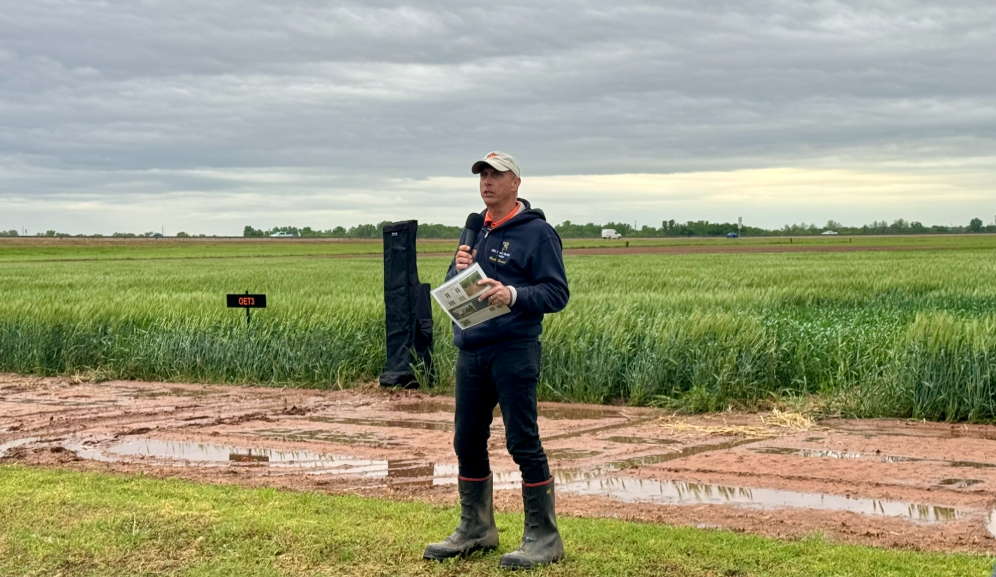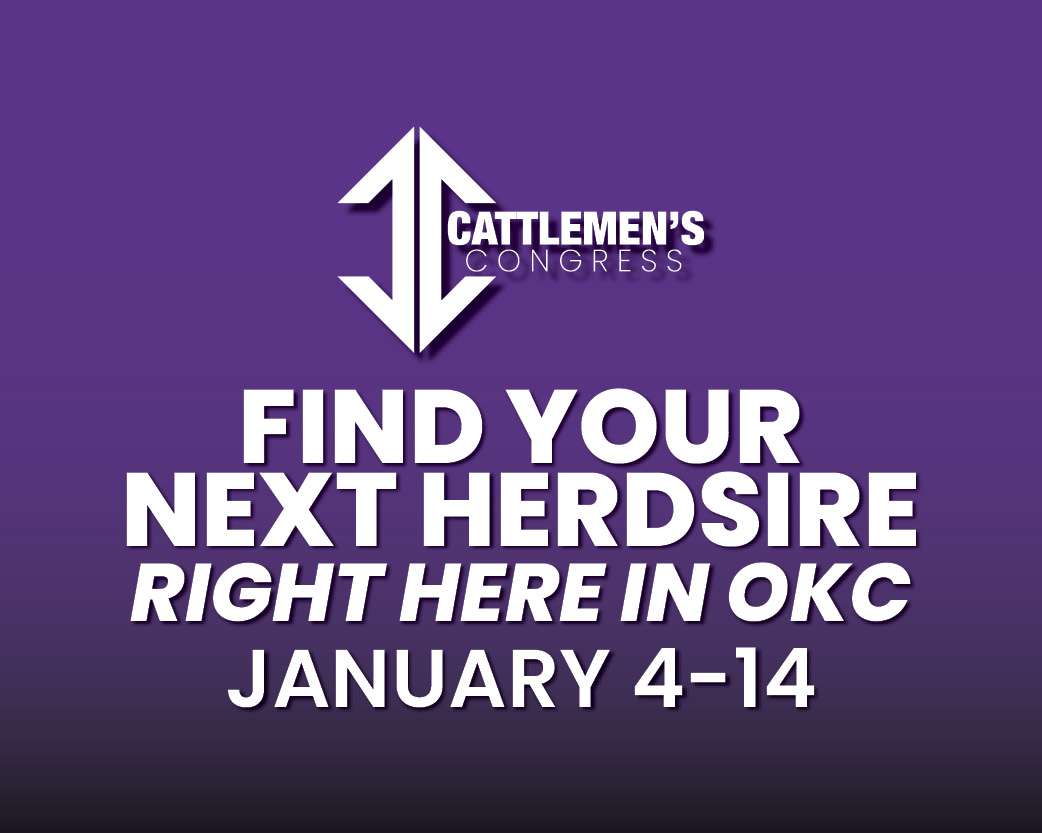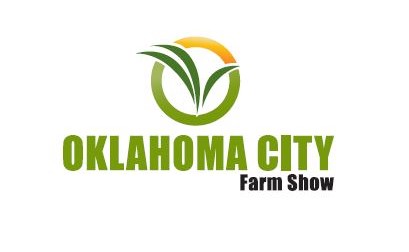
During the Chickasha Wheat forage and field day, OSU Wheat Breeding specialist Dr. Brett Carver provided an in-depth look at the university’s extensive wheat breeding nursery. Speaking with our own Maci Carter, Dr. Carver shared insights into promising new varieties, the challenges of breeding for Oklahoma’s unpredictable climate, and his dedication to enhancing wheat for consumer health.
Dr. Carver emphasized the significance of the Chickasha site for evaluating advanced breeding lines. “Well, from the wheat breeding standpoint, we saw a very big wheat breeding nursery. I mean, this is one of our bigger sites, and we include a lot of the germplasm that’s close to being released, and close to me means one to four years out. So just about 90% of that material is located at Chickasha.” He recalled the valuable disease pressure from the previous year, stating, “Last year we got a super look at that germplasm because we had two diseases, leaf rust and stripe rust, that I could use to make some of the most important selection decisions I’ve made in a long time. Rarely do we get both of those in the same place.” While disease pressure might be lower this year, Dr. Carver acknowledged the benefit for farmers, quipping, “The farmers will love that, but, as a breeder, I need it sometimes.”
When asked about standout varieties this year, Dr. Carver noted it was still early in the season for definitive pronouncements. However, he expressed excitement about the newest release, Orange Blossom. “Of course, I’m really excited about the newer material. Really excited about Orange Blossom. What lies ahead for it and see how producers like it.”
A surprising attribute of Orange Blossom came to light recently. “One thing I did hear that I did not know was true about Orange Blossom… Amanda Silva… learned that it and the other two varieties that we call Clearfield, that are out there, Strat and Double Stop, have longer coleoptiles than most varieties than anything else that she evaluated,” Dr. Carver explained. He elaborated on the importance of this trait: “What that does is it allows us to plant a little deeper. Every quarter of an inch, half an inch helps. And that’s what the coleoptile length on Orange Blossom allows. It allows probably a half-inch, maybe an inch deeper. It’s that much different. Didn’t know that.”
Addressing the challenges of developing high-performing wheat for Oklahoma’s variable climate, Dr. Carver stressed the need for multi-year testing across diverse environments. “It takes a lot of different environments because no two years are the same in Oklahoma. And I don’t know how to get around that, I have to take what the year gives me.” He acknowledged the difficulty in consistently creating specific stress conditions, such as drought, outside of the panhandle region. “Bottom line is I take what the years give me, and I just have to make sure that we sample or we test in enough years to go forward with a very confident decision. It’s usually about five years.”

Dr. Carver also discussed the unique challenges faced by various wheat-growing regions. “Oh, they have their own struggles for their regions, you know, and I, I don’t think it’s unusual.” He expressed gratitude that Oklahoma avoids certain devastating diseases found elsewhere, emphasizing the ongoing need to develop genetic resistance over time.
Looking to the future, Dr. Carver emphasized the continued importance of breeding for greater planting depth. “I’ve always wanted to have the genetics to allow producers to plant a little bit deeper. I want to plant deeper because I’m missing out on some opportunities when I go to a site… I never was able to reach moisture… To me, that’s giving in, and I don’t wanna do that. So that remains a real high priority of mine.” He noted the difficulty in accessing all desired germplasm but remains committed to this goal.
Another significant focus for Dr. Carver is enhancing wheat for the benefit of consumer health. “We’re gonna take the low-hanging fruit first. And the low-hanging fruit is grain with higher antioxidants… I really think fiber… is the big one. And we need to change the fiber composition. And just change the Total outlook on wheat because of that, so we no longer think of wheat as a source of bad carbohydrates. No, it’s a source of carbohydrates and they’re gonna be good, good carbohydrates.”
Concluding the conversation, Maci Carter congratulated Dr. Carver on being named a Big 12 Faculty Member of the Year. Dr. Carver responded humbly, “I had no idea it was coming. I didn’t even know that award existed, but I’m so glad that the institutions have decided to recognize talent across the board in the academic ranks… It’s just recognizing people in academics who are really doing some good things. And I’m completely for that.” He emphasized the importance of recognizing academic achievements alongside athletic accomplishments.

















